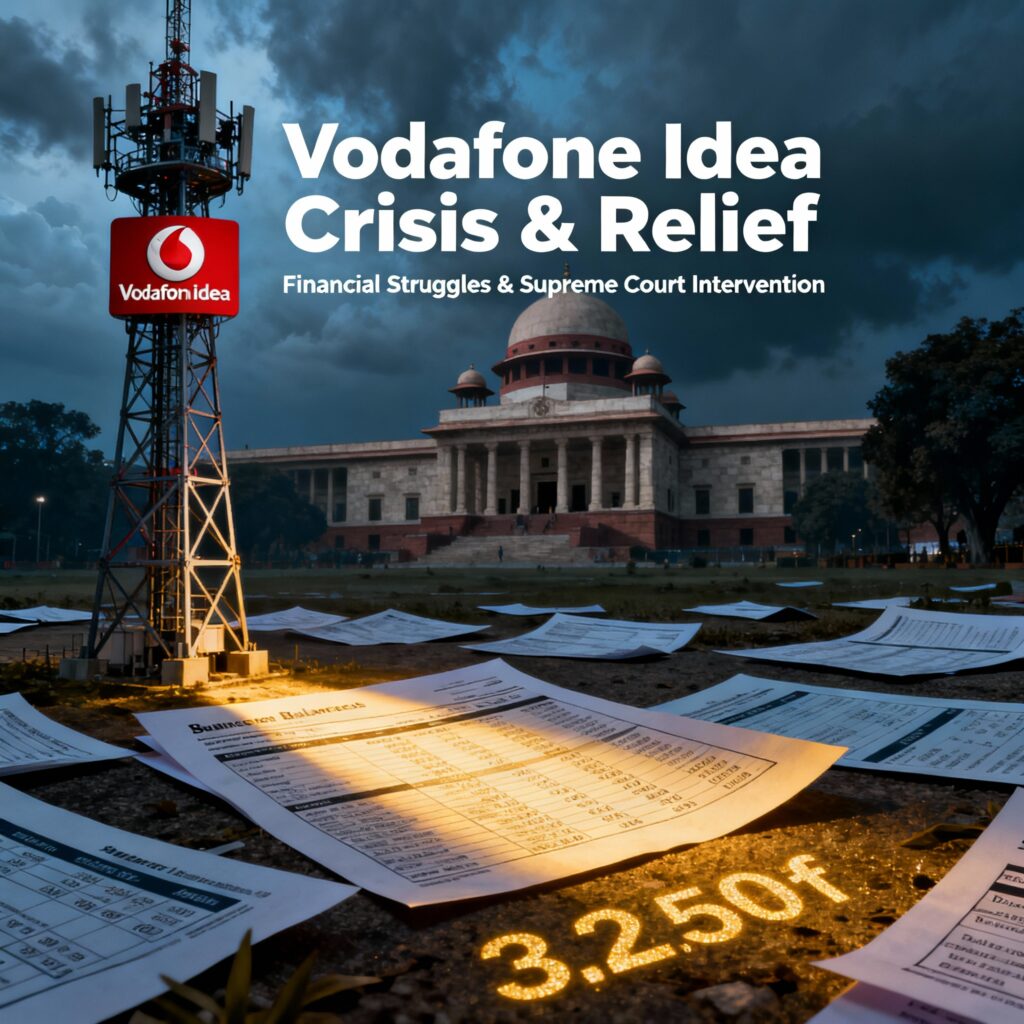Adjusted Gross Revenue (AGR) dues have been a defining financial and legal challenge in India’s telecom sector, significantly impacting leading operators like Vodafone Idea. Understanding the AGR concept, the origins of Vodafone Idea’s debt, and the implications of the disputes offers clarity on one of India’s most complex corporate-financial sagas.
What is AGR?
AGR stands for Adjusted Gross Revenue, which comprises a telecom company’s gross revenue from its core and non-core services. The concept originated from a Supreme Court directive in 2004, defining AGR as the base for calculating payments that telecom operators must make to the government. These dues include license fees and spectrum usage charges.
Unlike earlier practice, where operators paid fees only on license revenue, the AGR calculation also includes non-telecom revenues such as income from dividends, investments, asset sales, and even rental income. This broader definition has substantially increased the amounts telecom companies owe annually.
The AGR Dispute Origin and Legal Battles
The AGR controversy intensified after the Supreme Court’s 2012 and 2019 rulings. The apex court held operators responsible for paying dues based on the broader AGR definition, rejecting appeals by telecom companies arguing their liabilities should exclude non-core revenues.
The Court set a payment deadline in 2019 for outstanding dues, which many operators struggled to clear. The aggregate liability for the sector was estimated at ₹92,000 crore (approximately $12 billion), including penalties and interest.
Operators responded with legal appeals, petitions for staggered payments, and requests for relief from penalties, emphasizing the harsh financial burden amidst fierce competition, declining tariffs, and capital expenditures required for 4G and 5G rollouts.
Vodafone Idea’s AGR Debt Background
Vodafone Idea’s troubles are emblematic of the broader sector’s plight. Formed in 2018 through the merger of Vodafone India and Idea Cellular, the company inherited a staggering AGR liability.
Vodafone Idea’s standalone AGR dues fixed by the Supreme Court initially stood at about ₹58,254 crore. This amount swelled over time to more than ₹83,400 crore due to accumulated interest, penalties, and newer demands from the Department of Telecommunications (DoT). Additionally, a separate demand of roughly ₹9,450 crore arose from one-time spectrum fees.
The cumulative debt created massive liquidity stress. Vodafone Idea reported losses exceeding ₹15,000 crore annually in recent fiscal years. The company struggled to raise fresh capital, maintain network quality, and compete with well-funded rivals, particularly Reliance Jio.
Government and Regulatory Response
Recognizing the sector’s distress, the government launched various relief measures. These included spectrum fee deferments, moratoriums on interest payments, and encouraging lenders to restructure debt packages.
More importantly, the DoT was authorized to review dues and explore settlement options aligned with industry sustainability goals. The government’s 49% equity stake in Vodafone Idea, obtained through debt conversion, reflects official efforts to stabilize the operator and safeguard consumer interests.
The Supreme Court’s Recent Shift
In late 2025, the Supreme Court took a landmark step by allowing the Centre to reconsider Vodafone Idea’s AGR dues. This unprecedented move aligns with evolving government policy to support telecom sector viability.
While the court did not grant automatic waivers, it recognized the need to balance revenue collection against the operational survival of carriers serving hundreds of millions. The decision also urges finality to the AGR saga, encouraging cooperative resolution between regulators and operators.
Implications for Vodafone Idea and the Sector
Vodafone Idea’s AGR case affects more than just dues payment. It determines the company’s ability to access capital markets, invest in network infrastructure, and compete on pricing and services.
Success in negotiating AGR relief could transform Vodafone Idea’s financial outlook, enabling growth initiatives and improved shareholder value. Conversely, unresolved liabilities risk continued distress, market erosion, and lost livelihoods.
The case also sets a precedent for other operators grappling with similar AGR obligations, potentially influencing sector-wide reforms and policies around telecom licensing and revenue sharing.
What Lies Ahead?
The AGR dispute exemplifies the clash between regulatory frameworks and commercial realities in fast-evolving digital markets. As India pursues ambitious connectivity and digital inclusion goals, finding sustainable revenue models that balance government receipts and operator health remains critical.
Ongoing dialogues between Vodafone Idea, the DoT, and financial institutions will shape the telecom landscape’s future. Streamlined resolutions could stabilize the market, foster competition, and ultimately benefit consumers through better services and pricing.
In conclusion, Vodafone Idea’s AGR dues story encapsulates broader challenges in the Indian telecom industry — balancing regulatory obligations, financial sustainability, and the rapid pace of technology-driven transformation. The path forward lies in cooperative governance, pragmatic policies, and robust financial restructuring to secure the sector’s growth trajectory and consumer interests.



